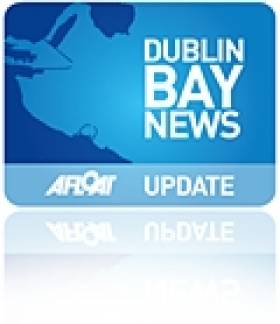Displaying items by tag: DART
Dun Laoghaire Apartment Provides Stunning Vistas of Dublin Bay
New to the market in Dun Laoghaire is a two-bed apartment in a luxury development of 100 homes overlooking the waterfront marina.
As The Sunday Business Post reports, Number 99 at Harbour View boasts spectaulcar views of Dublin Bay from Clontarf to Howth from its eight-metre balcony.
The fourth-floor apartment extends to circa 102 sqm and has had no previous tenants.
Accommodation comprises an entrance hall in pale hardwood, a large light-filled living/dining area with a corner aspect, a fully fitted kitchen area with breakfast counter, a bathroom, storage room, two bedrooms (one ensuite) and a study that could be used as a third bedroom.
An underground parking space is also included in the sale.
Harbour View is located on Crofton Road beside the DART station, with the yacht clubs and the town centre itself right at your doorstep.
99 Harbour View has an asking price of €575,000. For more details contact estate agents Sherry FitzGerald at 01 284 4422.
Dun Laoghaire’s Maritime Museum Set for Re-Opening
At the end of this month the M.I.I. will celebrate the 70th anniversary of its foundation and it is the intention of the voluntary run museum to 'officially' re-open in March 2012.
To read more about the renovation programme click HERE. If you would like to assist through voluntary work, fund-raising activities or make a donation in addition to keeping abreast of the latest developments visit www.mariner.ie
View Larger Map
Stena to Re-Introduce HSS this Week
Stena Line's HSS fast-ferry the Stena Explorer will be re-introduced on its Dun Laoghaire to Holyhead route this Friday, writes Jehan Ashmore.
The HSS (High Speed Service) operated 19,638 tonnes craft will run between 1 April to 13 September to cope with the additional demand over the summer period.
A single daily round trip is scheduled with a 10.00 hours sailing from Holyhead and a 13.15 hours sailing from Dun Laoghaire. Passage time is 120 minutes (2 hours).
The HSS can 350 vehicles and with 1500 passengers, the craft can handle higher volumes of seasonal summer foot passengers compared to the last route serving vessel, the 4,113 tonnes Stena Lynx III. The return of the HSS service links in with those intending to make onward journeys from Dun Laoghaire's DART commuter rail service to Dublin city centre and beyond on the national rail network.
Up to early January the route had been served by the Stena Lynx III which remains moored alongside Dun Laoghaire's St. Michaels Wharf. The craft which can take 627 passengers and 120 cars and marketed as the Stena 'Express' is to resume high season sailings starting in July between Rosslare-Fishguard.
In total the company carries over two million passengers on its four Irish Sea routes each year. An additional route between Belfast-Liverpool (Birkenhead) was taken over by the Swedish owned ferry company from DFDS Seaways late last year, is subject to regulatory clearance.
Until such clearance has been granted, this route will be operated separately from all other Stena Line routes. In the meantime the company advise until further notice to make bookings which will remain acceptable through the use of the DFDS website.

























